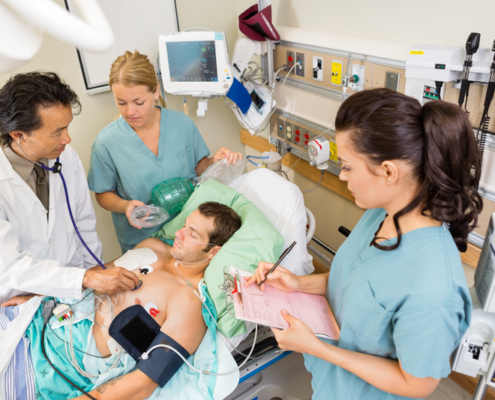Operating Theatre
Theatre teams are particularly vulnerable to exposure to Nitrous Oxide and other anaesthetic gases. Whilst modern operating theatres are well ventilated and use scavenger systems, leaks can, and do occur, and long term exposure carries serious health risks.
Our team of consultants use ultra sensitive specialist equipment to monitor the theatre environments and ensure that your environment within the recommended workplace exposure limits. Your report will also identify any issues and make recommendations for further action.
To find out more about our COSHH air monitoring service for hospital theatre departments click here or call us on 0333 015 4345 for a quote.
Theatre Recovery Areas
Recovery staff are also at risk of exposure as patients breathe out anaesthetic gases after surgery and in the course of a working day this has the potential to reach unsafe levels.
Personal sampling tubes are worn by staff throughout their shift. These tubes are then analysed to determine the amount of Nitrous Oxide the team members have been exposed to. Measured exposure is compared to the Workplace Exposure Limit, (100 ppm for Nitrous Oxide) to ensure that exposure is compliant with the COSHH Regulations 2002 (as amended). If high exposures are measured, suggestions for reducing exposure will be made.
To find out more about our personal sampling service for theatre recovery areas click here or call us on 0333 015 4345 for a quote.

 https://cairntechnology.com/wp-content/uploads/2023/04/hospitalinfectionmay2023.jpg
533
800
Sarah Clements
https://cairntechnology.com/wp-content/uploads/2023/06/Cairn-logo_RGB-compact-3.jpg
Sarah Clements2023-05-16 06:08:572023-04-25 17:12:19How Does Infection Spread in a Hospital?
https://cairntechnology.com/wp-content/uploads/2023/04/hospitalinfectionmay2023.jpg
533
800
Sarah Clements
https://cairntechnology.com/wp-content/uploads/2023/06/Cairn-logo_RGB-compact-3.jpg
Sarah Clements2023-05-16 06:08:572023-04-25 17:12:19How Does Infection Spread in a Hospital?





